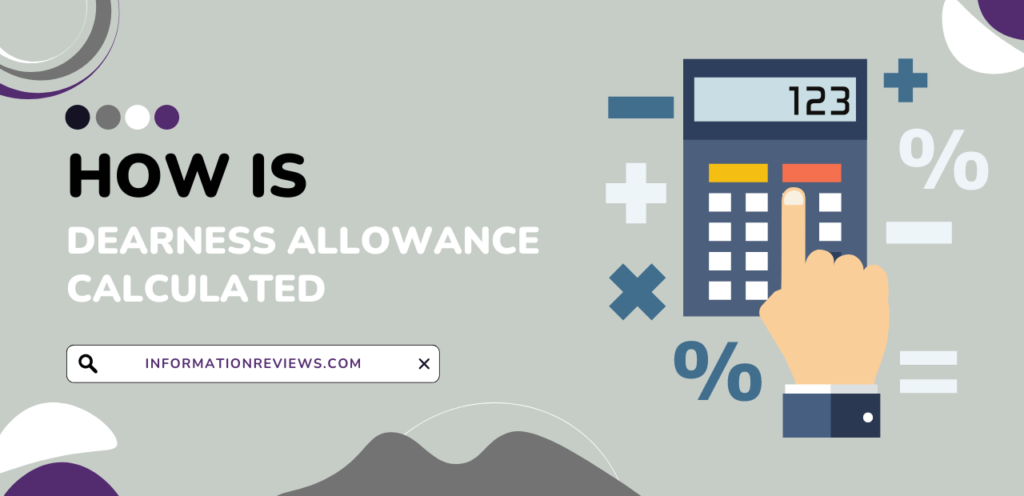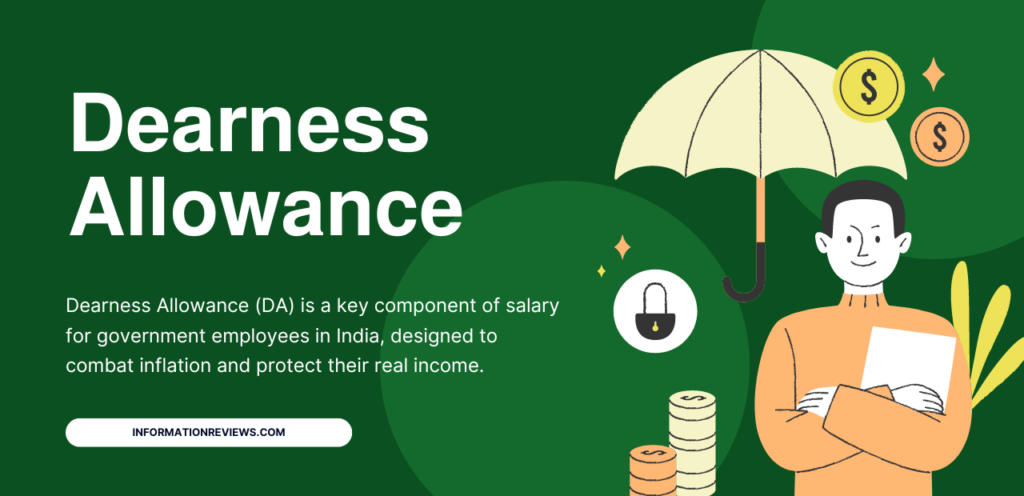Dearness Allowance (DA) is a key component of salary for government employees in India, designed to combat inflation and protect their real income. As inflation rises, DA serves as a lifeline, ensuring that the purchasing power of employees and pensioners is safeguarded. In this article, we will explore the concept of DA in detail, including its significance, calculation, recent revisions, and its role in the pay structure of public sector employees.
What is Dearness Allowance (DA)?

Dearness Allowance is a cost-of-living adjustment provided by the government to its employees and pensioners to help them cope with the inflationary impact on their expenses. The allowance is added to the basic salary to account for rising prices of goods and services, making it an essential part of public sector salaries.
The Dearness Allowance is provided in two forms:
- Industrial Dearness Allowance (IDA): Paid to employees in public sector enterprises.
- Variable Dearness Allowance (VDA): Paid to central government employees and pensioners.
The main purpose of DA is to offset inflation and ensure that the employees’ earnings retain their real value.
The Importance of Dearness Allowance
The Dearness Allowance plays a crucial role in supporting government employees and pensioners in several ways:
1. Mitigating Inflation’s Impact
Inflation erodes the purchasing power of money, which means that over time, employees would be able to buy fewer goods and services with the same amount of salary. The Dearness Allowance helps bridge this gap by providing additional financial compensation linked to inflation levels.
2. Financial Stability for Pensioners
For retired employees, the DA adjustment is vital to maintaining financial stability post-retirement. Given that pensioners do not have regular salary increments, DA revisions ensure that their standard of living remains intact in the face of inflation.
3. Improving Employee Satisfaction
Regular revisions of the Dearness Allowance ensure that public sector employees are fairly compensated for changes in the cost of living. This contributes to improved morale and makes government jobs more attractive compared to private sector opportunities.
Read More: No Cap Meaning and Cap Meaning | Story for Kids in Hindi
How is Dearness Allowance Calculated?

The Dearness Allowance is calculated based on the Consumer Price Index (CPI), a measure of inflation. The All India Consumer Price Index (AICPI) data is used to track price changes of essential goods and services, which helps determine the percentage increase in DA.
Here’s the formula commonly used to calculate DA:DA (%)=(AICPI−BaseIndex)BaseIndex×100\text{DA (\%)} = \frac{(AICPI – Base Index)}{Base Index} \times 100DA (%)=BaseIndex(AICPI−BaseIndex)×100
In this formula:
- AICPI: The All India Consumer Price Index, which tracks inflation.
- Base Index: The index at the time when the 7th Pay Commission recommendations were implemented (typically 2016).
DA is typically revised every six months, based on AICPI data.
Recent Dearness Allowance Revisions
The central government periodically revises the Dearness Allowance in response to changes in inflation. In 2023, for instance, the government announced an 11% hike in DA, raising it from 42% to 53% for central government employees and pensioners. Such revisions reflect the government’s ongoing efforts to ensure that employees and pensioners can keep up with the rising costs of living.
Dearness Allowance and the 7th Pay Commission
The 7th Pay Commission plays a key role in determining salary structures, including the Dearness Allowance for government employees. The commission’s recommendations, implemented in 2016, form the foundation for current DA calculations. One of the key aspects of the 7th Pay Commission was the shift to a new base year for AICPI calculation, ensuring that DA reflects recent inflation data more accurately.
The DA percentage is applied to the basic salary, which means that as basic salaries increase, the absolute value of DA increases correspondingly.
How Dearness Allowance Impacts Pensioners
Pensioners receive a version of DA known as Dearness Relief (DR). Like serving employees, pensioners are also affected by inflation. The Dearness Relief is calculated similarly to DA and is provided to retired government employees to help them manage their post-retirement expenses.
The percentage increase in Dearness Relief is typically in line with the DA revisions announced for serving employees. This ensures that pensioners, too, are protected from the adverse effects of inflation.
Future of Dearness Allowance
As inflation continues to fluctuate, the future of Dearness Allowance remains tied to economic trends and government policy. It is expected that DA will continue to play a central role in the compensation of government employees and pensioners, ensuring that their income stays aligned with the real cost of living.
Conclusion
Dearness Allowance is an indispensable element of salary and pension structures in India. By protecting public sector employees and pensioners from the eroding effects of inflation, DA ensures financial stability and maintains purchasing power. As DA rates continue to be revised based on inflation trends, its importance in the lives of government employees and pensioners will only grow.
Read More: The Ultimate Guide to StreamEast | Vyvymanga


